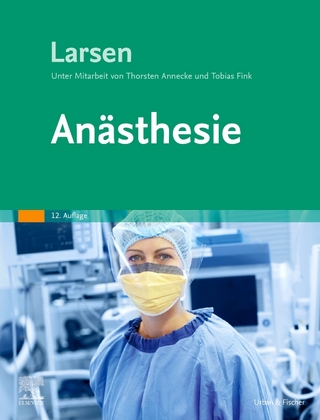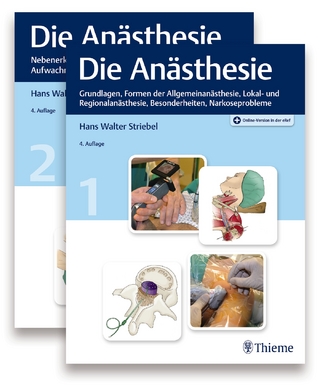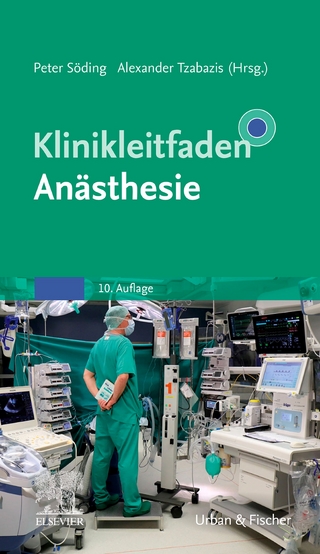
Avoiding Common Anesthesia Errors
Lippincott Williams and Wilkins (Verlag)
978-0-7817-8847-2 (ISBN)
- Titel erscheint in neuer Auflage
- Artikel merken
This pocket book succinctly describes 215 common, serious errors made by attendings, residents, fellows, CRNAs, and practicing anesthesiologists in the practice of anesthesia and offers practical, easy-to-remember tips for avoiding these errors. The book can easily be read immediately before the start of a rotation or used for quick reference.
Each error is described in a quick-reading one-page entry that includes a brief clinical scenario, a short review of the relevant physiology and/or pharmacology, and tips on how to avoid or resolve the problem. Illustrations are included where appropriate. The book also includes important chapters on human factors, legal issues, CPT coding, and how to select a practice.
AIRWAY AND VENTILATION
Basics
Advanced
Never neglect the basics of airway management
Basics of airway management- Part II (Tips and Tidbits)
Consider PEEP
Advanced: A variety of techniques provide acceptable anesthesia for awake intubation of the airway: ultimately, the most important factors are operator experience and adequate time
Special Cases: A high inspired concentration of oxygen is contraindicated in certain circumstances
Remember that there are special considerations involved with both intubation and chronic airway management of burn patients
Problem solving: Always troubleshoot an increase in peak airway pressure
Plan for an airway fire with every head and neck case
Know how to perform a cricothyroidotomy
Perioperative Issues
Don'ts: Do not overinflate the cuff of the endotracheal tube
Don't under represent the risks associated with the use of a laryngeal mask airway
Do not be intimidated by the placement and use of double-lumen endotracheal tubes
Do not underestimate the difficulty of reintubating a patient who has undergone carotid endarterectomy or cervical spine surgery Do not start the airway management of a Ludwig angina patient until personnel and equipment for a definitive (surgical) airway are assembled
LINES AND ACCESS Basics:Remember that the IV start is your first chance to make a favorable impression on the patient
Never use an intravenous line without palpating and inspecting it visually
Use of ultrasound guidance for cannulation of the central veins improves success rates, decreases number of attempts, and lowers complication rates
Central Lines: Central line placement: never neglect the basics
Approach the use of a pulmonary artery catheter with caution
Avoid technique-related central venous catheter complications by using modern tools
Don'ts: Don't overflush lines
Do not use the subclavian vein for central access of any type in a patient planned for dialysis
Errors: Remember that inadvertent intra-arterial injection is not rare
Avoid errors in invasive blood pressure measurement
Remember that loss of a patent hemodialysis fistula in the perioperative period is a serious event for the patient and requires immediate communication with the surgeons
FLUIDS, RESUSCITATION, AND TRANSFUSION Fluids: Hypertonic saline: the "solution" to the solution problem?
Remember that the synthetic colloid solutions have distinct properties and risk/benefit ratios
Resuscitation: Protect the kidneys, not the "UOP"
Do not treat lactic acidosis with bicarbonate
Consider the use of tris-hydroxymethyl aminomethane (THAM)to treat refractory or life-threatening metabolic acidosis
Use the principles of "damage control anesthesia" in the care of the massively bleeding patient and ask the surgeons to implement "damage control surgery" if necessary
"Routine" Labor and Delivery Learn from the care of the combat victim: ask the surgeons to consider damage control surgery for the bleeding patient
Transfusion: Know what screening tests are performed on volunteer donor blood
Transfusion of packed red blood cells requires a careful riskbenefit analysis
MEDICATIONS Perioperative issues:
INTRAOPERATIVE AND PERIOPERATIVE Basics:
REGIONAL ANESTHESIA
PACU
PEDIATRIC ANESTHESIA
NEUROANESTHESIA
CARDIAC ANESTHESIA
OB ANESTHESIA
PAIN MEDICINE
HUMAN FACTORS
LEGAL
PROFESSIONAL PRACTICE
CODING AND PAYMENT-MAKE SURE YOU GET PAIDCOMMENCEMENT
Index
| Erscheint lt. Verlag | 27.7.2007 |
|---|---|
| Verlagsort | Philadelphia |
| Sprache | englisch |
| Maße | 133 x 213 mm |
| Gewicht | 1021 g |
| Themenwelt | Medizin / Pharmazie ► Medizinische Fachgebiete ► Anästhesie |
| ISBN-10 | 0-7817-8847-1 / 0781788471 |
| ISBN-13 | 978-0-7817-8847-2 / 9780781788472 |
| Zustand | Neuware |
| Haben Sie eine Frage zum Produkt? |
aus dem Bereich



